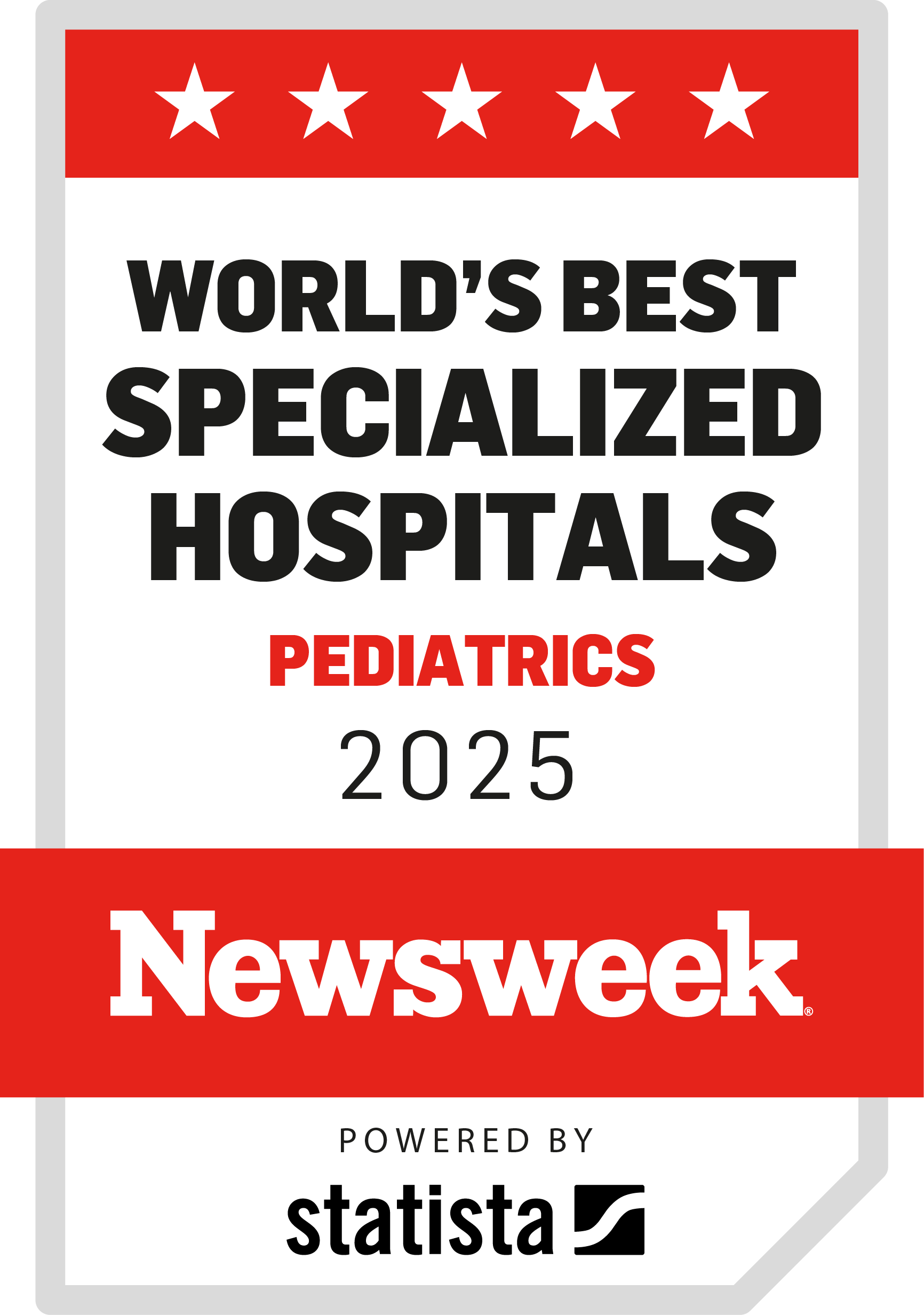Progeria | Symptoms & Causes
What are the symptoms of progeria?
Children with HGPS have a strikingly similar physical appearance. Although they appear healthy at birth, signs of progeria begin appearing before their second birthday. These include loss of body fat, hair loss, aged-looking skin, hearing loss, joint stiffness, dislocated hips, and bone problems. Weight and height typically fall below the third percentile. Social and intellectual development are typically intact and age-appropriate.
The most serious, life-threatening complication of progeria is hardening of the coronary and cerebral arteries (atherosclerosis). This can cause stiffening and blockage of vessels. As in older adults, this can lead to arrhythmias, angina, heart attack, stroke, and transient ischemic attack (TIA or a mini-stroke). Strokes or TIAs can sometimes lead to seizures.
What is the life expectancy for a child with progeria?
Without treatment, children with progeria die of heart attacks or strokes caused by atherosclerosis at an average age of 14.5 years. With long-term medical treatment, however, average life expectancy has increased to almost 20 years. A few children have lived into their mid-20s.
What causes progeria?
HGPS is caused by mutations in a gene called LMNA (pronounced “lamin-A”). These generally are not inherited and occur spontaneously in the parents’ egg or sperm or during cell division soon after conception. Only one copy of the mutation is needed to cause progeria.
Occasionally, a parent may have been born with an LMNA mutation, but carry it in just a portion of their cells (a condition called mosaicism). If the mutation occurs in their sperm or eggs, they can pass it on to their child even though they themselves do not have progeria.
The LMNA gene produces a protein, lamin A, that makes up part of the scaffolding in cells, holding the cell nucleus together and helping maintain the health of the cell. A small change in its genetic code leads to production of an abnormal lamin A protein called progerin. Progerin accumulates at the cell nucleus, making cells unstable and less able to divide. This is believed to lead to signs of premature aging in children with progeria.
Progeria | Diagnosis & Treatments
How is progeria diagnosed?
Genetic testing can confirm HGPS when physical signs suggest progeria. Early signs include tightness or bulging of the skin in the abdominal or thigh area, failure to thrive (falling well below the pediatric growth curve), a lack of body fat, a receding chin, abnormalities of the hip joints, and delayed or incomplete teething.
Genetic testing can be done through a geneticist or is available at no cost to families through the Progeria Research Foundation. Results typically are returned in two to four weeks.
How is progeria treated?
Emergency care
Children with progeria are at risk for heart attacks, strokes, and transient ischemic attacks (mini strokes). Go to an emergency department immediately if your child:
- Has chest pain with breathing difficulty, change in consciousness, sweating, and/or dizziness
- Shows signs and symptoms of a stroke (weakness of an arm or leg or one side of the body, trouble speaking, loss of vision, and/or confusion)
- Has a seizure lasting more than five minutes
- Has trouble breathing.
Drug treatment
Based on several clinical trials conducted at Boston Children’s Hospital, the U.S. Food and Drug Administration (FDA) has approved the first treatment, lonafarnib (Zokinvy), for most children with progeria 12 months of age and older. It is currently the only approved drug that treats progeria’s root cause.
Lonafarnib blocks the production of progerin by inhibiting an enzyme called farnesyltransferase. Clinical trials have found improvements in life expectancy, weight gain, blood vessel stiffness, bone structure, and cardiovascular health in children who have received it.
Additional drug treatments are currently in clinical trials (see the research and innovation section). Other treatments are still in the early research stages and are not yet ready for clinical trials.
Cardiovascular monitoring and care
Because of their increased cardiovascular risk, children with progeria should be monitored by a cardiologist and receive annual blood pressure, cholesterol, and heart function tests, including an electrocardiogram and echocardiogram (cardiac ultrasound).
Annual magnetic resonance imaging (MRI) of the brain and magnetic resonance angiography (MRA) of arteries in the brain and neck are also recommended. These studies can identify arterial narrowing that can indicate a risk for stroke. Annual blood testing should also include fasting lipids and blood sugar.
As children live longer with progeria, they may develop aortic valve stenosis, or a narrowing of the heart’s aortic valve that restricts blood flow from the heart to the body. This can be treated with surgery or catheter-based interventions to replace or bypass the valve.
Your child’s doctor may prescribe low-dose aspirin therapy to thin the blood and prevent heart attack or stroke. Let your health care providers know about any symptom that gets worse with activity and goes away with rest. They may prescribe antihypertensive or heart failure medications, anticoagulants, or other medications as needed.
For more information on caring for children with progeria, the Progeria Research Foundation provides a detailed handbook with information for both clinicians and families. Download the handbook.
Other specialty care
In addition to a cardiologist, other kinds of specialists can help children with their various symptoms. Specialty care may include:
Orthopedics, physical therapy, and occupational therapy
Joint stiffness, joint pain, and osteoarthritis are common in children with progeria, especially in the hips, knees, ankles, and feet. While most joint pain can be treated effectively with over-the-counter analgesics and physical therapy, more significant or persistent hip pain should prompt referral to an orthopedic specialist. Physical therapy, home exercise with gentle stretching, and physical activities like walking, dancing, hiking, and swimming can increase range of motion.
Children with progeria are also at risk for hip dislocation, which may require surgery, and shoulder dislocation. While weight-bearing activities like walking, running, and jumping can maintain bone density and strengthen muscles, playing on trampolines and other uneven surfaces pose a risk of hip dislocation and should be avoided.
Evaluation by an occupational therapist is recommended twice yearly for children under the age of 6 years old and yearly for children over the age of 6.
Ophthalmology
Children with progeria should have yearly eye exams with an ophthalmologist. Most will need eyeglasses, often for farsightedness. Other common problems:
- Dry eye, which can be helped with artificial tears and a nighttime lubricating ointment.
- Sometimes children’s eyes don’t shut fully during sleep, which can exacerbate dry eye and cause damage to the cornea, clouding vision. Skin tape can be used to gently close the eyelids at bedtime.
- Irritants getting into the eye, as children with progeria have no eyebrow hair and scant eyelashes.
- Light sensitivity, which can be addressed as needed with sunglasses or lenses that darken in bright light.
Audiology
Your child’s hearing should be tested routinely. Many children with progeria have mild to moderate low-frequency hearing loss, which can be subtle and may go unnoticed without testing. Others may need assistive listening devices and hearing aids.
Dentistry
Dental care should begin at age 1, to monitor common dental conditions, including:
- Crowding of the teeth
- Delayed or failed eruption of baby and adult teeth
- Gum disease
- High rate of cavities
- Small, underdeveloped jaws
Dermatology
Children with progeria are susceptible to dry, itchy skin. Gentle cleansers and over-the-counter creams sometimes help. More serious skin problems warrant seeing a dermatologist.
Podiatry
Children with progeria often have problems with their feet and may benefit from seeing a podiatrist. Custom shoe inserts can increase comfort in walking.
Wellness and living with progeria
Attending school
Children with progeria have age-appropriate social and intellectual functioning. Interaction with peers is very important, though some precautions will be needed with activities like sports. Many children with progeria attend school with accommodations that enable them to comfortably participate in regular classes. Nursing staff should have a defibrillator available for treatment.
Occupational therapy can increase hand dexterity so children can master writing and other tasks. Shorter pens and pencils with padded grips can help make these tasks more comfortable.
Nutrition
Children with progeria have difficulty gaining weight. Frequent meals and nutritious, high-calorie foods by mouth, and high-calorie drink supplements can be helpful. Healthy high-calorie foods include olive oil, melted cheese, peanut butter, avocado, and whole-milk shakes and smoothies.
Diets with adequate vitamin D and calcium will help maintain good bone health, and calcium and vitamin D supplements are sometimes recommended.
Make sure your child follows a heart-healthy diet and stays well hydrated, especially during travel, to maintain a good blood flow to the brain and heart.
Mobility
Some children with progeria may benefit from walkers and mobility devices to maintain their independence. Any sudden loss in ability to walk or a change in range of motion should be evaluated.
Handling stares and questions
Families of children with progeria may struggle with people staring at their child, even if the child is too young to be aware. There’s no right or wrong way to address this, and no right or wrong way to talk to your child about progeria. You will know when the time is right.
Some parents recommend taking opportunities to speak to and educate the community about progeria and helping build a close circle of friends, neighbors, and relatives.
Progeria | Research & Innovation
Areas of innovation for progeria
Our partner, the Progeria Research Foundation (PRF), has spearheaded many research studies on progeria and hosts an International Patient Registry that is providing insights on the natural course of progeria over time. The PRF also maintains a cell and tissue bank and a medical database that includes tests such as X-rays, MRIs, and CT scans from children all over the world. These resources are helping to inform research.
Research on progeria is starting to shed light on the aging process and heart disease in general. For example, studies have found that the progerin protein is present in cells of the artery wall and increases by 3 percent per year as we age.
Clinical drug trials
In partnership with the Progeria Research Foundation, Boston Children’s has hosted multiple clinical trials of lonafarnib, drawing children from all over the world. These trials showed an increased life expectancy and have led the Food and Drug Administration to approve lonafarnib.
A variety of specialists at Boston Children’s with expertise in progeria evaluate children in the Experimental Therapeutics Unit, a dedicated clinical research facility. Other treatments under study include:
- Lonafarnib combined with everolimus, an existing drug that has been found in laboratory experiments to increase the breakdown of progerin. This trial has switched back to lonafarnib alone and continues to enroll patients.
- Progerinin, a new drug that appears to reduce progerin accumulation. Based on studies in mice showing that it increased lifespan by 50 percent, a clinical trial is in progress at Boston Children’s and Brigham and Women’s Hospital. Click here for information from the Progeria Research Foundation.
By measuring progerin levels in blood plasma, researchers can get an early indication of how well the treatments are working or whether they are likely to be beneficial.
Preclinical studies
Recent studies in animal models of progeria have shown great promise.
- DNA base editing, a highly precise form of gene editing that corrects the progeria gene mutation, has more than doubled the lifespan of mice receiving it.
- RNA therapeutics have reduced progerin production by interfering with the messenger RNA “blueprint” needed to make it. One study, using a drug named SRP2001, reduced progerin levels in the aorta (the body’s main artery) and other tissues and prolonged survival. Another study, using a compound called LB143, reduced progerin production in the liver, heart, and aorta. Boston Children’s has completed a six-month study to determine the feasibility of delivering this treatment through a small needle under the skin.



